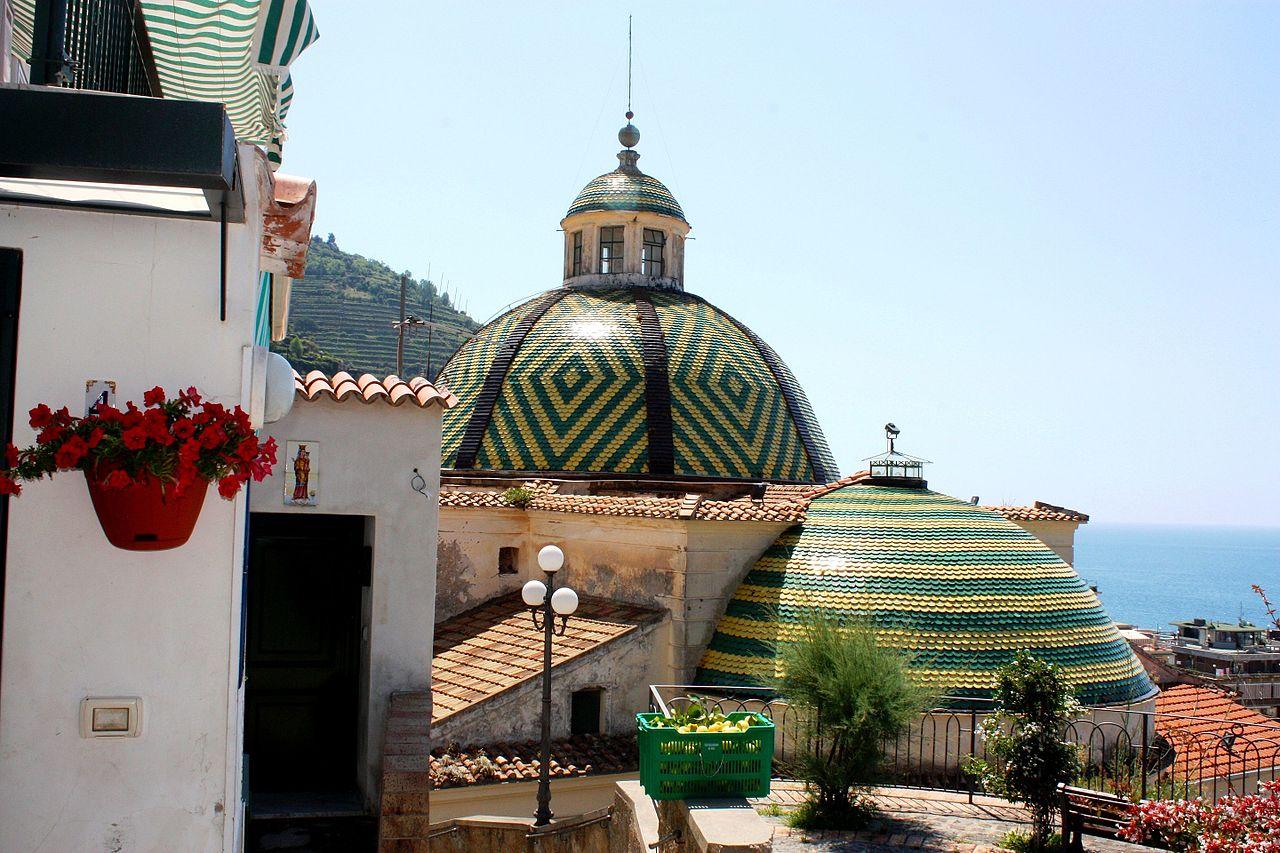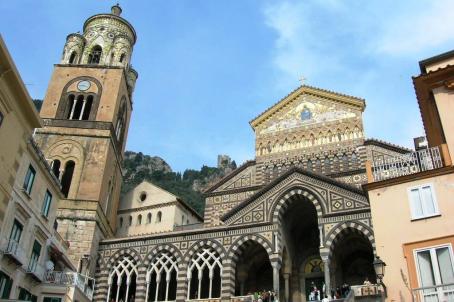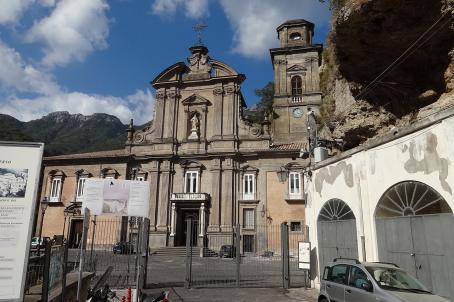Collegiate Church of Santa Maria a Mare
The collegiate church of Santa Maria a Mare was founded in the 13th century after a statue of the Virgin Mary was found on the beach in 1204. The exterior is mainly from the 18th century, but the bell tower dates from the 14th century, and a hemispherical dome was completed in 1863, covered with Vietri earthenware.





